Testing sync engine
- 2. Testing (iOS) Sync Engine
- 3. Agenda âĒ Overall tests stats âĒ Our test strategies âĒ MockTransportSession âĒ Workflow âĒ Problems âĒ Future plans
- 5. âĒ 3356 tests on OSX Overall tests stats
- 6. âĒ 3356 tests on OSX âĒ 3415 tests on iOS (+ apns tests) Overall tests stats
- 7. âĒ 3356 tests on OSX âĒ 3415 tests on iOS (+ apns tests) âĒ ~ 7.5 minutes to build and run all the tests on one platform (build ~ 40s, tests ~ 7 min) Overall tests stats
- 8. âĒ 3356 tests on OSX âĒ 3415 tests on iOS (+ apns tests) âĒ ~ 7.5 minutes to build and run all the tests on one platform (build ~ 40s, tests ~ 7 min) Overall tests stats
- 9. âĒ Unit tests ~ 80% Overall tests stats
- 10. âĒ Unit tests ~ 80% âĒ Integration tests ~ 20% Overall tests stats
- 11. âĒ Unit tests ~ 80% âĒ Integration tests ~ 20% âĒ Performance tests - 18 Overall tests stats
- 12. âĒ Unit tests ~ 80% âĒ Integration tests ~ 20% âĒ Performance tests - 18 âĒ Tests of tests Overall tests stats
- 13. âĒ Unit tests ~ 80% âĒ Integration tests ~ 20% âĒ Performance tests - 18 âĒ Tests of tests âĒ Sorry, no UI tests Overall tests stats
- 15. What we DONâT do: Our test strategies
- 16. What we DONâT do: âĒ test against http:// (real backend) âĒ test using http requests stubs (like OHHTTPStubs) Our test strategies
- 17. What we DONâT do: âĒ test against http:// (real backend) âĒ test using http requests stubs (like OHHTTPStubs) Why? âĒ Stubs are not that flexible. Our test strategies
- 18. What we DONâT do: âĒ test against http:// (real backend) âĒ test using http requests stubs (like OHHTTPStubs) Why? âĒ Stubs are not that flexible. âĒ Itâs still slow. Our test strategies
- 19. What we really do: âĒ Test against fake backend Our test strategies
- 20. What we really do: âĒ Test against fake backend Advantages âĒ Fast âĒ Flexible âĒ Independent âĒ Testable Our test strategies
- 21. What we really do: âĒ Test against fake backend Advantages âĒ Fast âĒ Flexible âĒ Independent âĒ Testable Disadvantages âĒ Need to write (and test!) code âĒ Need to be in sync with real backend (can be improved) Our test strategies
- 26. WTF is THAT? ZMTransportSession - is a delegate of a delegate of NSURLSession MockTransportSession
- 27. WTF is THAT? ZMTransportSession - is a delegate of a delegate of NSURLSession âĒ Sends http requests to scheduler MockTransportSession
- 28. WTF is THAT? ZMTransportSession - is a delegate of a delegate of NSURLSession âĒ Sends http requests to scheduler âĒ Handles authentication MockTransportSession
- 29. WTF is THAT? ZMTransportSession - is a delegate of a delegate of NSURLSession âĒ Sends http requests to scheduler âĒ Handles authentication âĒ Opens/closes web socket connection MockTransportSession
- 30. WTF is THAT? MockTransportSession - is a mock of ZMTransportSession MockTransportSession
- 31. WTF is THAT? MockTransportSession - is a mock of ZMTransportSession MockTransportSession - acts as a fake backend MockTransportSession
- 32. WTF is THAT? âĒ Make fake requests MockTransportSession
- 33. WTF is THAT? âĒ Make fake requests âĒ Records requests and responds to them MockTransportSession
- 34. WTF is THAT? âĒ Make fake requests âĒ Records requests and responds to them âĒ Manages internal database MockTransportSession
- 35. WTF is THAT? âĒ Make fake requests âĒ Records requests and responds to them âĒ Manages internal database âĒ Can simulate remote changes. MockTransportSession
- 36. WTF is THAT? âĒ Make fake requests âĒ Records requests and responds to them âĒ Manages internal database âĒ Can simulate remote changes. âĒ Can send push channel (web socket) events MockTransportSession
- 37. âĒ Before each test we insert objects in internal database (in memory) MockTransportSession
- 38. âĒ Before each test we insert objects in internal database (in memory) âĒ Test code make request using MockTransportSession MockTransportSession
- 39. âĒ Before each test we insert objects in internal database (in memory) âĒ Test code make request using MockTransportSession âĒ It records and process incoming request (filtering by path and lots of ifs) MockTransportSession
- 40. âĒ Before each test we insert objects in internal database (in memory) âĒ Test code make request using MockTransportSession âĒ It records and process incoming request (filtering by path and lots of ifs) âĒ Performs some CRUD action on database depending on request (add message, create conversation, fetch conversation) MockTransportSession
- 41. âĒ Before each test we insert objects in internal database (in memory) âĒ Test code make request using MockTransportSession âĒ It records and process incoming request (filtering by path and lots of ifs) âĒ Performs some CRUD action on database depending on request (add message, create conversation, fetch conversation) âĒ Creates and sends response. Optionally can delegate it to other object (i.e. test case). MockTransportSession
- 42. Workflow
- 43. âĒ Finished feature - run all the tests Workflow
- 44. âĒ Finished feature - run all the tests âĒ Create pull request Workflow
- 45. âĒ Finished feature - run all the tests âĒ Create pull request âĒ Review, merge Workflow
- 46. âĒ Finished feature - run all the tests âĒ Create pull request âĒ Review, merge âĒ Release script runs all tests locally Workflow
- 47. âĒ Finished feature - run all the tests âĒ Create pull request âĒ Review, merge âĒ Release script runs all tests locally âĒ Pushes to remote branches (master/develop) Workflow
- 48. âĒ Finished feature - run all the tests âĒ Create pull request âĒ Review, merge âĒ Release script runs all tests locally âĒ Pushes to remote branches (master/develop) âĒ Xcode bots make integration on each push to master/ develop Workflow
- 49. âĒ Finished feature - run all the tests âĒ Create pull request âĒ Review, merge âĒ Release script runs all tests locally âĒ Pushes to remote branches (master/develop) âĒ Xcode bots make integration on each push to master/ develop âĒ Each bot for each platform runs all the tests Workflow
- 50. âĒ Finished feature - run all the tests âĒ Create pull request âĒ Review, merge âĒ Release script runs all tests locally âĒ Pushes to remote branches (master/develop) âĒ Xcode bots make integration on each push to master/ develop âĒ Each bot for each platform runs all the tests âĒ Bots archive and upload binary to the cloud Workflow
- 51. Problems
- 52. Solved: âĒ Tests isolation (mostly database state) Problems
- 53. Solved: âĒ Tests isolation (mostly database state) âĒ Handling asynchronous code Problems
- 54. Solved: âĒ Tests isolation (mostly database state) âĒ Handling asynchronous code Not yet solved: Problems
- 55. Solved: âĒ Tests isolation (mostly database state) âĒ Handling asynchronous code Not yet solved: âĒ Reduce tests running time U donât like me? =( Problems
- 56. Solved: âĒ Tests isolation (mostly database state) âĒ Handling asynchronous code Not yet solved: âĒ Reduce tests running time âĒ Sync with real backend Problems
- 57. Solved: âĒ Tests isolation (mostly database state) âĒ Handling asynchronous code Not yet solved: âĒ Reduce tests running time âĒ Sync with real backend âĒ Flaky tests Problems
- 58. Future plans
- 59. âĒ Split to smaller frameworks - to improve run time Future plans
- 60. âĒ Split to smaller frameworks - to improve run time âĒ Setup Buildasaur - to run tests on Github pull requests Future plans
- 61. âĒ Split to smaller frameworks - to improve run time âĒ Setup Buildasaur - to run tests on Github pull requests âĒ Record/replay tests for MockTransportSession - to keep it in sync Future plans
- 62. Thatâs it!

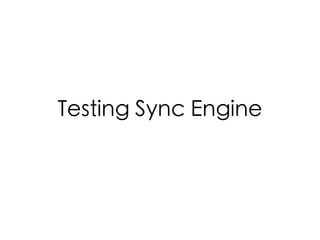
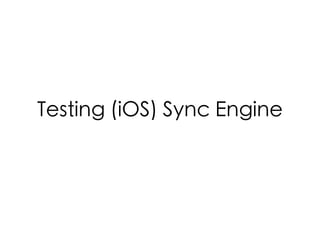
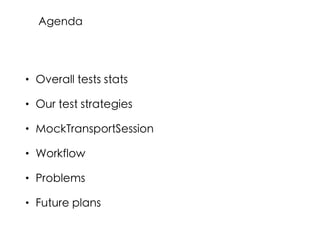
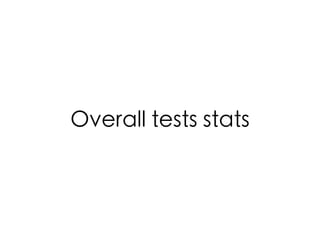
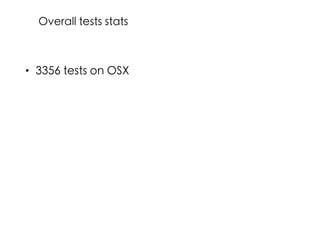
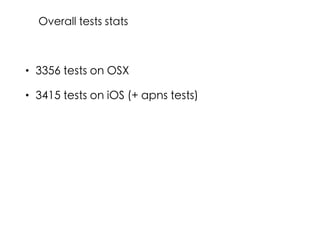
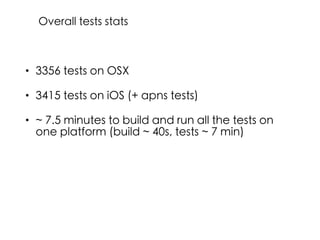
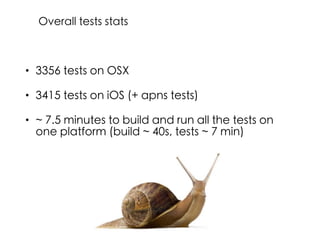
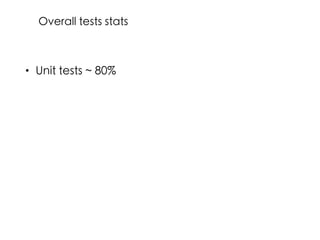

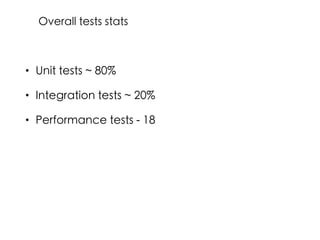
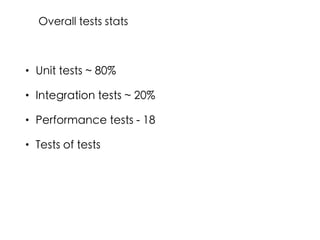
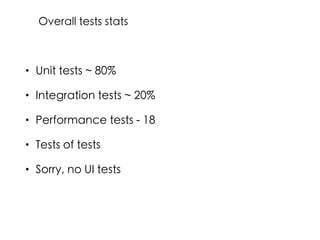
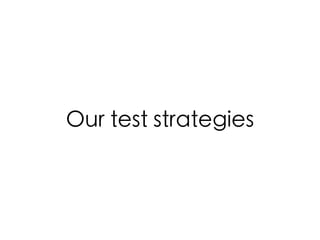
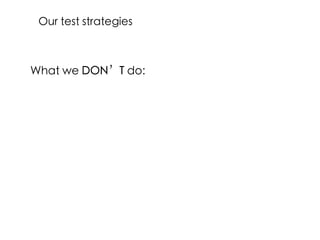
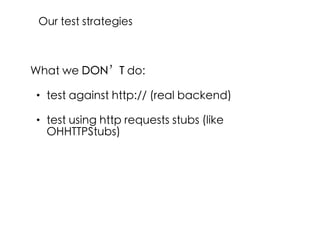
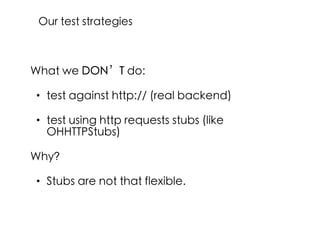
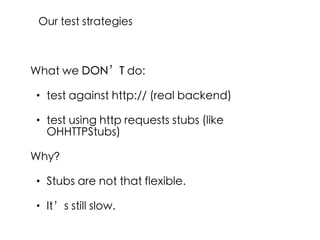
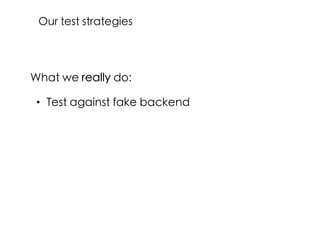
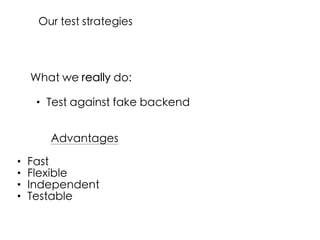
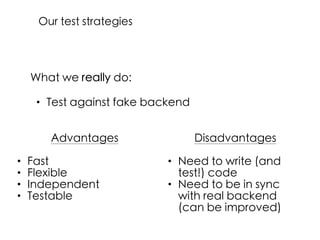

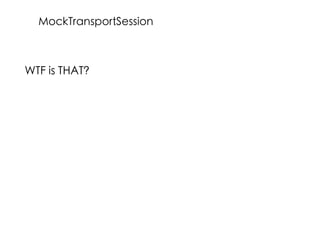
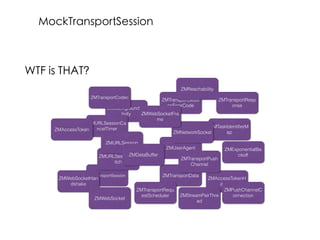
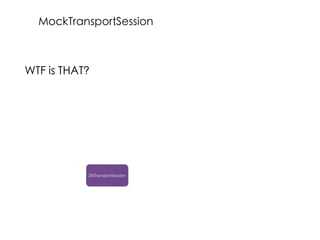
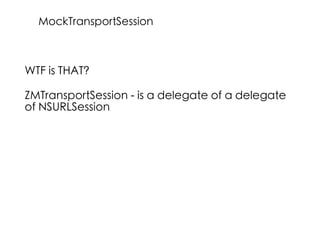

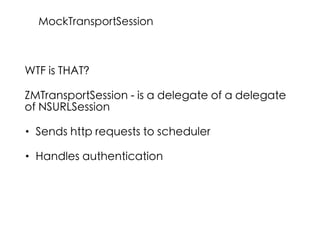
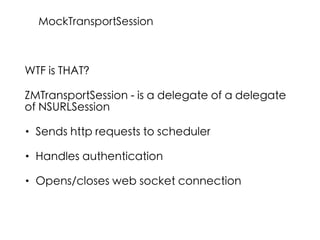
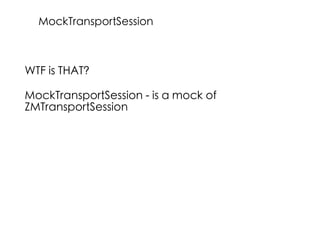
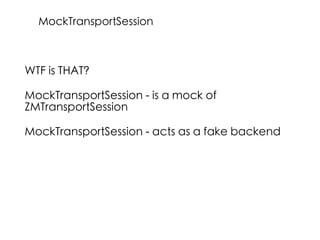
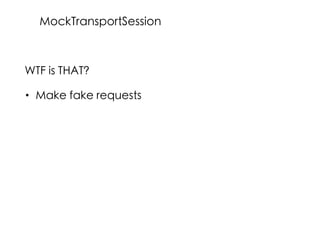
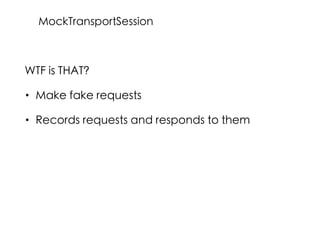
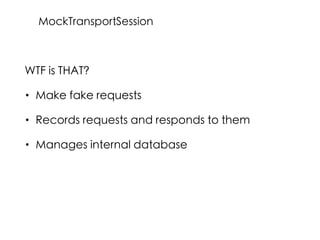
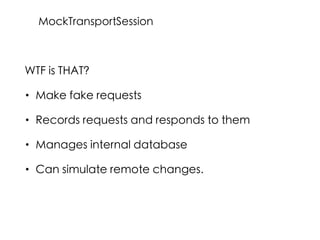
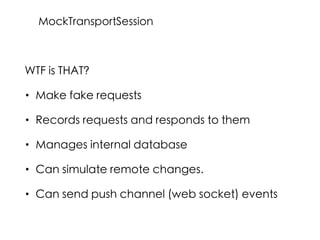
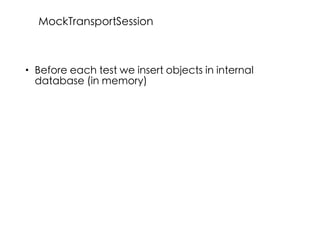
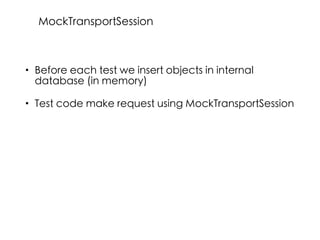
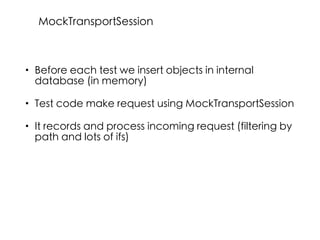
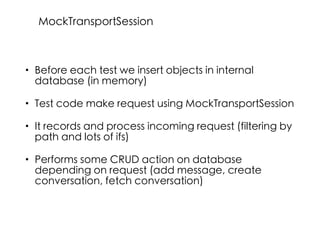

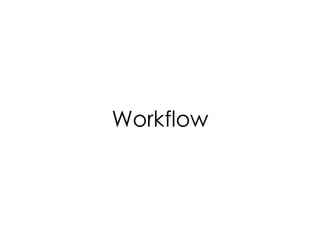
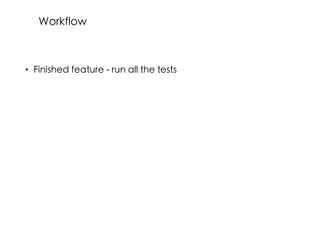
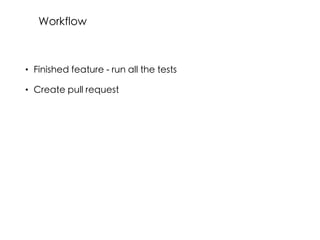
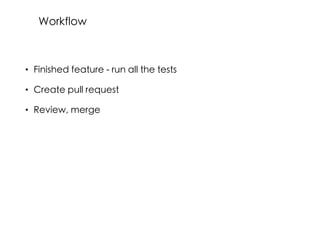


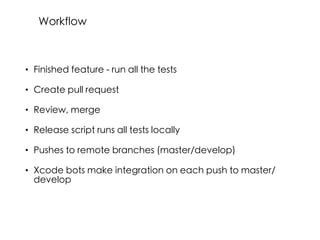
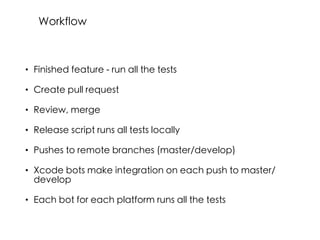
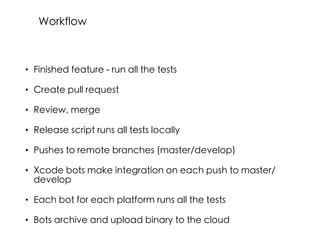
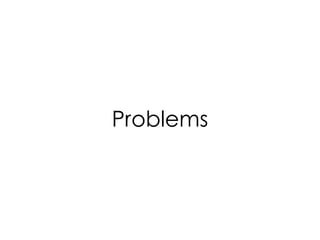
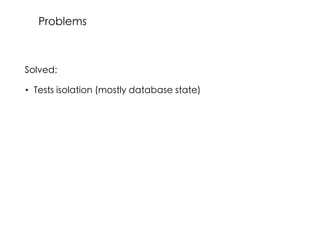
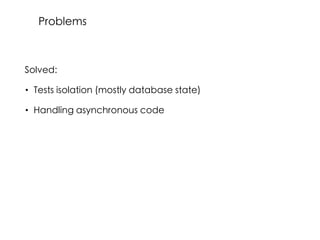
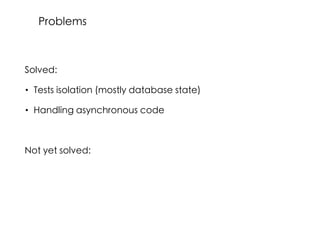

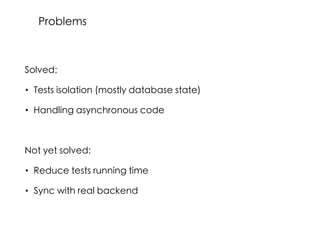
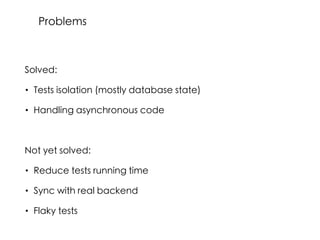

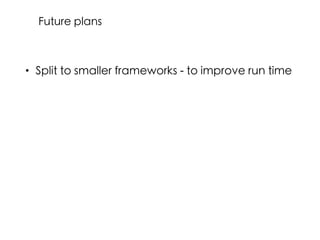










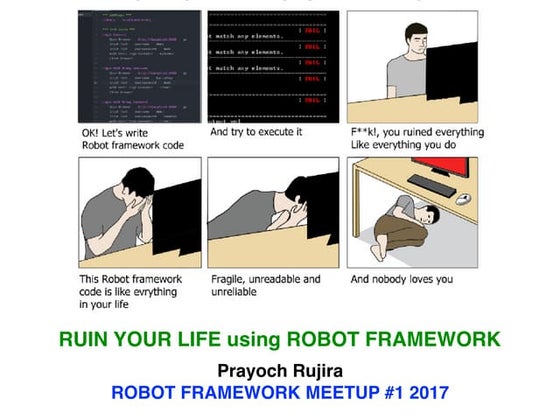





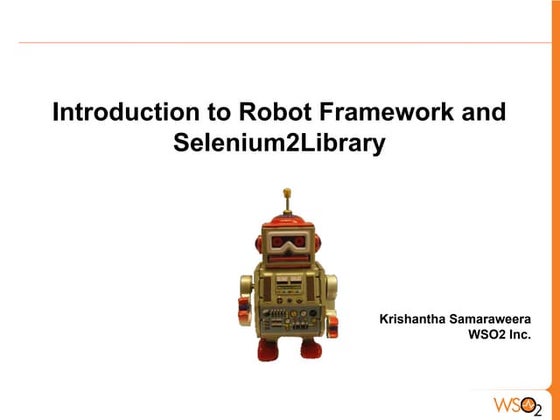



















![Static Code Analysis PHP[tek] 2023](https://cdn.slidesharecdn.com/ss_thumbnails/staticcodeanalysisphptek2023-230517122556-f35bc9a2-thumbnail.jpg?width=560&fit=bounds)













